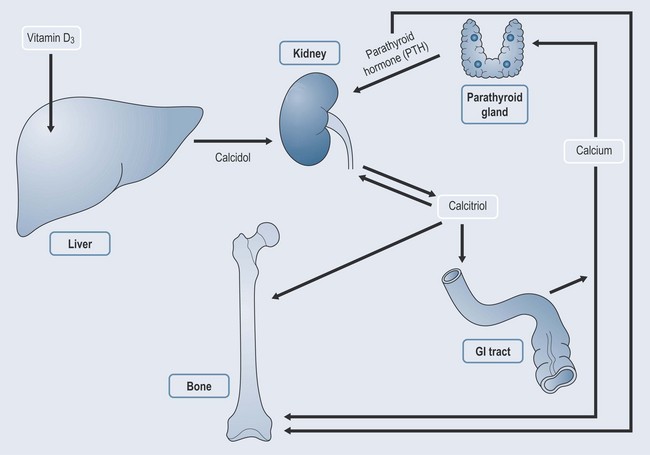Chapter 37 Metabolic disorders
Pituitary Gland
The ‘master gland’ of the body; possesses two lobes:
Anterior Pituitary Gland
The anterior pituitary gland secretes:
The anterior pituitary gland responds to:
Posterior Pituitary Gland
The posterior pituitary gland secretes:
Thyroid Gland (see Chapter 41 ‘scientific tests’ Table 41.1, p. 340, Table 41.2, p. 341)
Dysfunction of this gland is commonly encountered in clinical practice.
Iodine is necessary for the production of both hormones. Disorders of the thyroid include:
Hyperthyroidsm
• Symptomatic Relief
Non-selective beta-blockers, 235 because tremor usually responds to beta-2 and not beta-1-blockers (see Chapter 31 ‘The nervous system’, p. 235).
Parathyroid Gland
Calcium Regulation in the Body
Vitamin D is required for optimal calcium absorption.
Osteoporosis
Osteoporosis can occur when the rate of bone resorption is greater than its formation. Although osteoporosis is thought to be a postmenopausal problem it is possible even in children. Osteoporosis is caused by more than one factor. Risk factors are:
There is also an element of genetic and lifestyle factors.
• Assessment of Osteoporosis or Osteopaenia
Stay updated, free articles. Join our Telegram channel

Full access? Get Clinical Tree



